Corner sideboards: varieties, materials and design
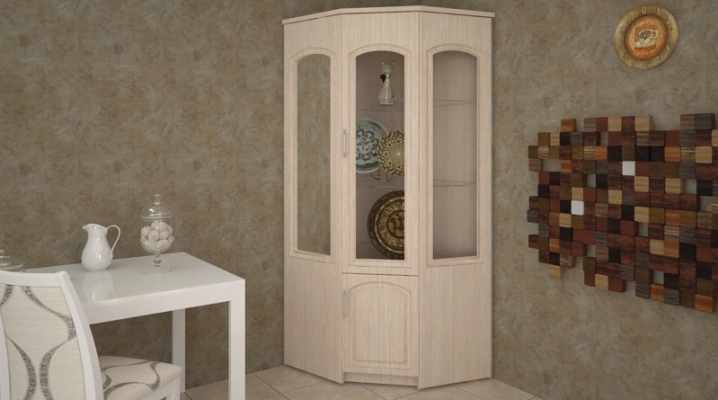
Despite fashion trends and changing furniture manufacturing technologies, there are eternal values in design. More and more apartment owners want to beautifully store their silverware, spectacular sets, beautiful dishes. Regardless of the size of the area, buffets are becoming more in demand, especially since quite a lot of compact models are presented in furniture salons. One of the most successful designs in this sense is a corner sideboard or sideboard.
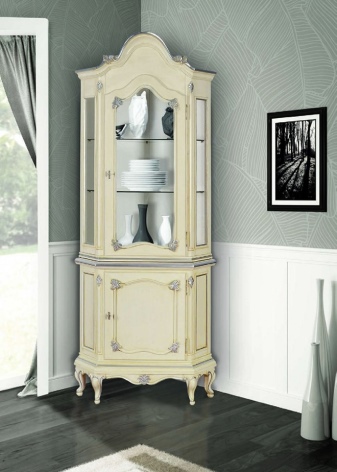

Peculiarities
The corner sideboard is a classic place for storing dishes, which cannot replace a kitchen set, but only complements it. In the traditional design, such furniture consists of two parts:
- bottom, closed with blind doors;
- top equipped with glass doors.
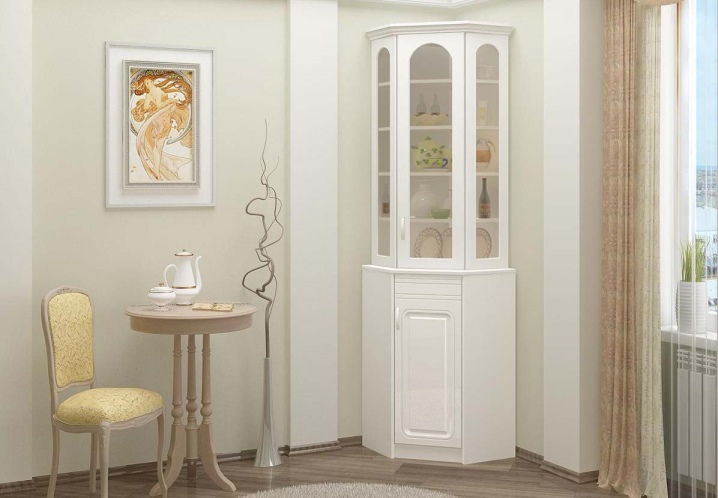
The shape of a corner sideboard can be intricate or laconic; a narrow radius sideboard is very common. The main advantage of such furniture is its compactness and the ability to fill an empty corner. In addition, she has other advantages:
- gives the interior originality;
- very comfortable to use;
- looks respectable and stylish, provided the interior is appropriate.
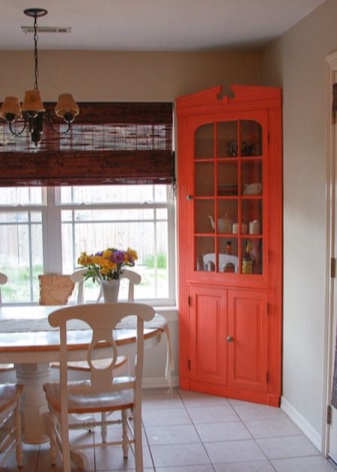
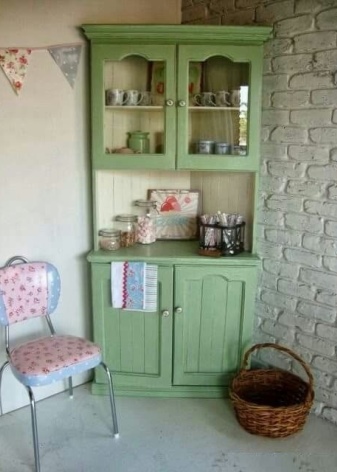
There are also disadvantages:
- very relative roominess;
- does not fit well into every style;
- must stand separately, therefore requires a dedicated space;
- a quality product is expensive.
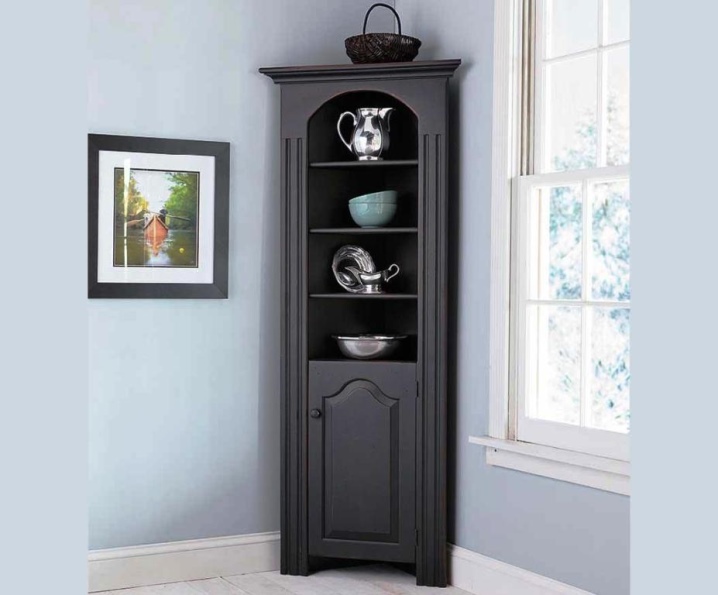
Despite the fact that the main purpose of the sideboard is decorative, it is possible to store and effectively demonstrate dishes, beautiful little things, textiles in it. These cabinets are different.
- Buffet. Functional, with closed sections at the bottom, it can be two- or three-tier, with or without a tabletop. The top can have glazing or open shelves.
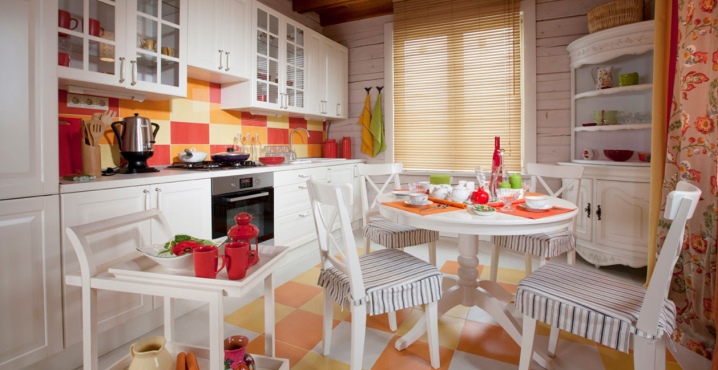
- Sideboard. Consists of two parts - the top is glazed, and the bottom is equipped with pull-out drawers.
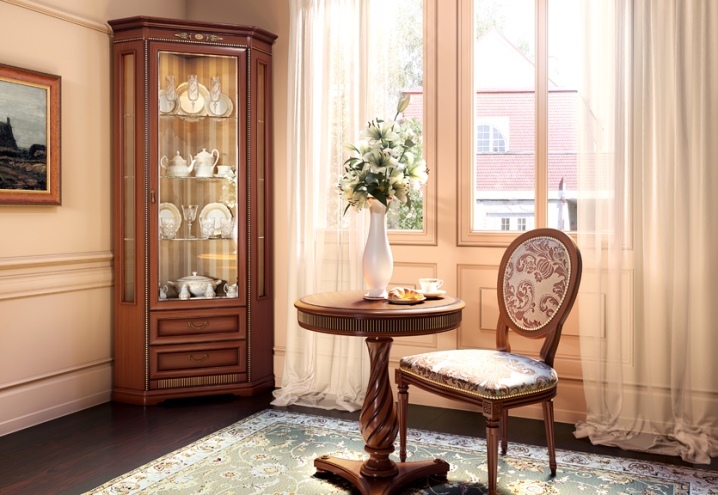
- Showcase. It differs from the two previous options in a large amount of open space. In fact, the showcase is all glazed.
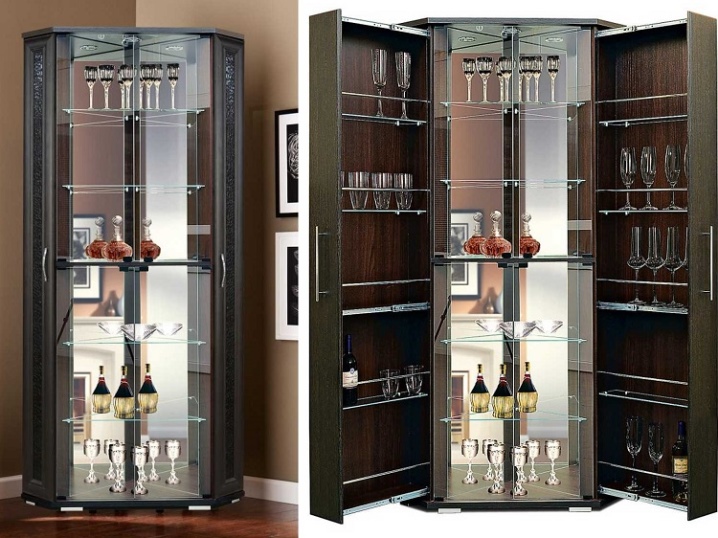
Materials (edit)
Corner cupboards for the kitchen, dining room or living room can be made from a wide variety of materials. Of course, most of these cabinets are made from different types of wood. TYou can also often find furniture made of chipboard or MDF. Elite sideboards and sideboards are made only from solid wood: pine, cherry, ash, oak, walnut. The most expensive and high-profile models are made from more valuable species, for example, mahogany.
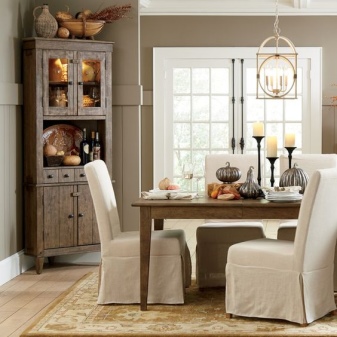

The price varies depending on the value of the breed, as well as the design of the product. When choosing a material, the most often evaluated indicator is durability. In this case, it is better to pay attention to oak and other elite varieties. If the price matters, you can stop at practical products made of birch, pine - their price is more democratic.
Woodworking products are widely used today, especially MDF and chipboard. Such products look presentable and beautiful, but are much cheaper. In addition, the models tolerate temperature drops and high humidity levels well.
In addition to wood, quite a lot of glass is involved in the construction. The glass top is made from impact resistant, tempered types.
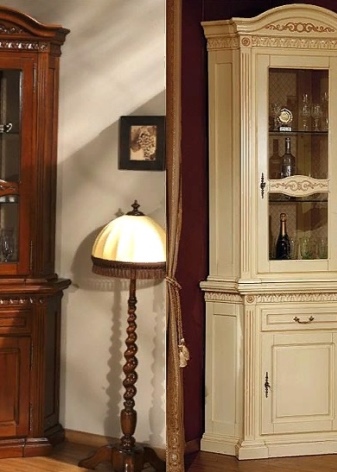
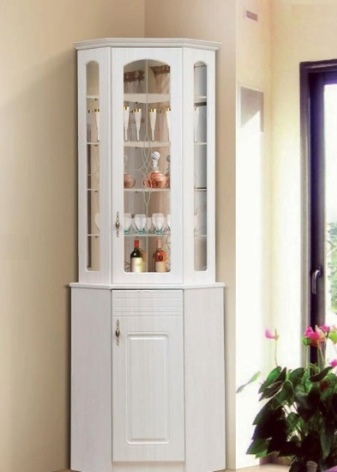
You can also find non-standard metal products. Such a case is most often made to order for modern interiors.
Color spectrum
Most of the models of the sideboards are made in wood shades. The most relevant tones:
- bleached oak;
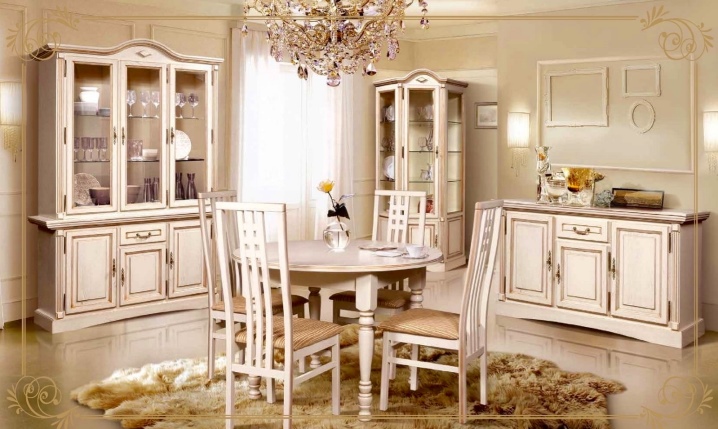
- dark cherry;

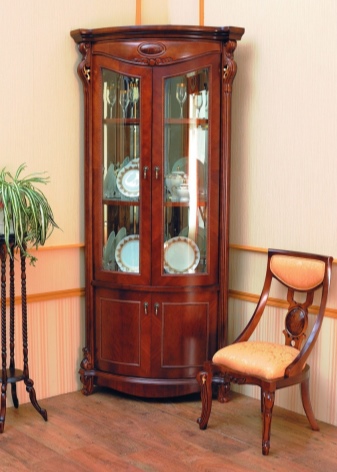
- Red tree;
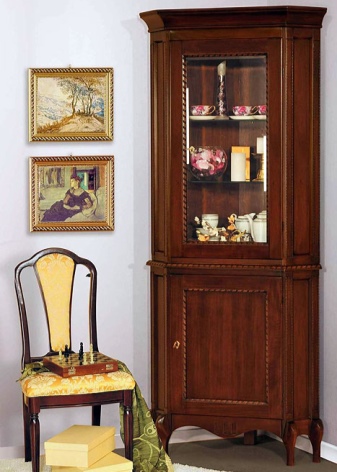

- nut;
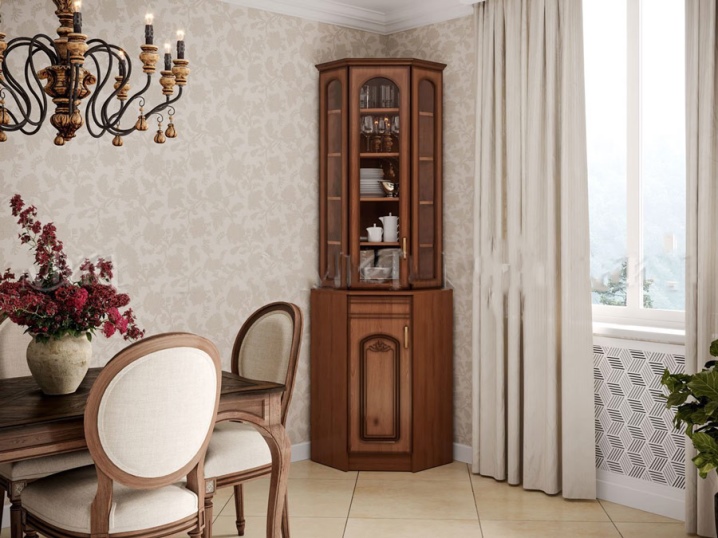
- wenge.
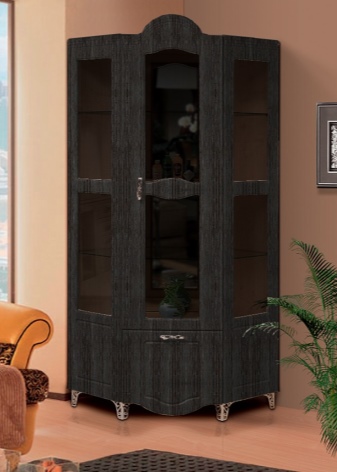
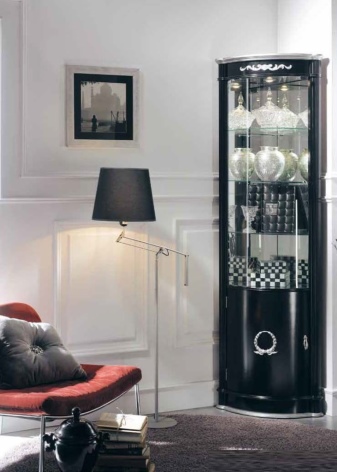
Besides, you can find a white or black sideboard, two-tone models... For example, a white top and a gray or brown bottom. The clear glass of the upper sections can be replaced with bright stained glass windows. When choosing a color, you must first of all focus on the general composition and style of the room.


Styles
The sideboard, as a design element, should not contradict the overall furniture ensemble, but, on the contrary, organically fit into the interior, create a single whole with it. Corner models will look harmonious in different styles.
- Baroque. In this rich and luxurious interior, a buffet with intricate and abundant carvings will be appropriate. There are also stone and mosaic glass in the decor.
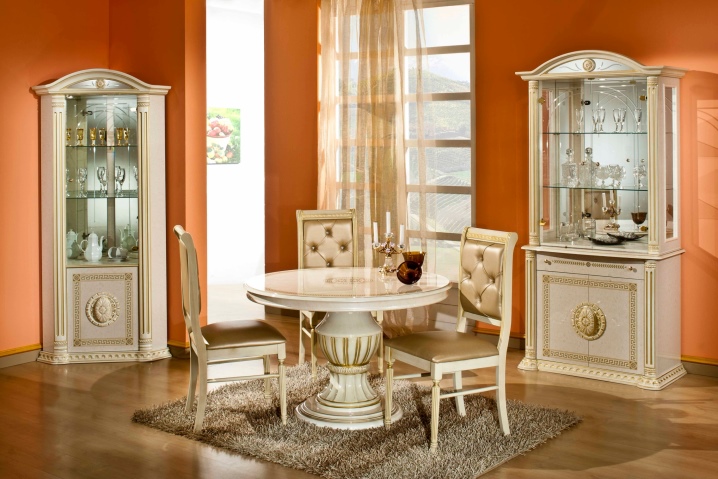
- Classic. In this design, the sideboard looks especially organic; models made of natural wood in neutral colors are preferred. Decorative details: carving, applied elements.
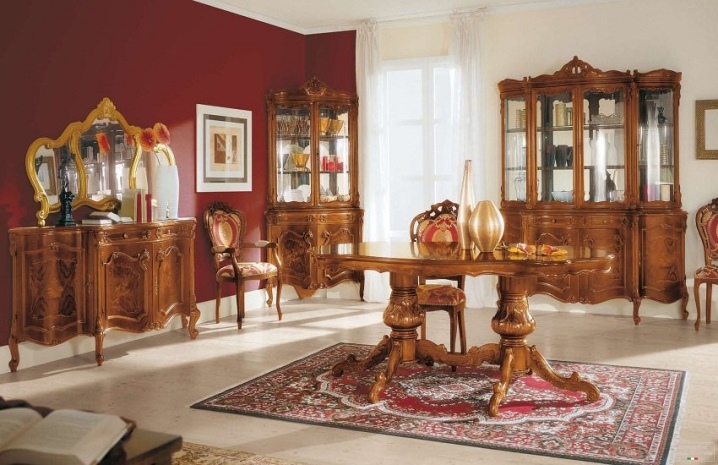
- Provence. The color is only white, with the effect of antiquity, the models are graceful, not bulky. The upper part can be decorated with colored glass.

- Country. Colors - only natural wood shades, mostly dark. The models are simple, concise and comfortable.

- Rustic. The buffet in such an interior is chosen to be rude and brutal, there is no decorative finish.
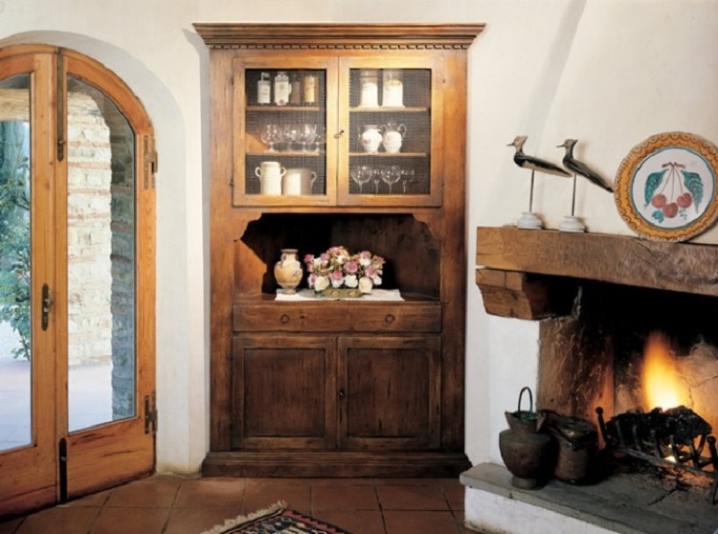
- Minimalism. An MDF buffet, laconic, without frills and decorative elements, will fit into the strict simple interior.
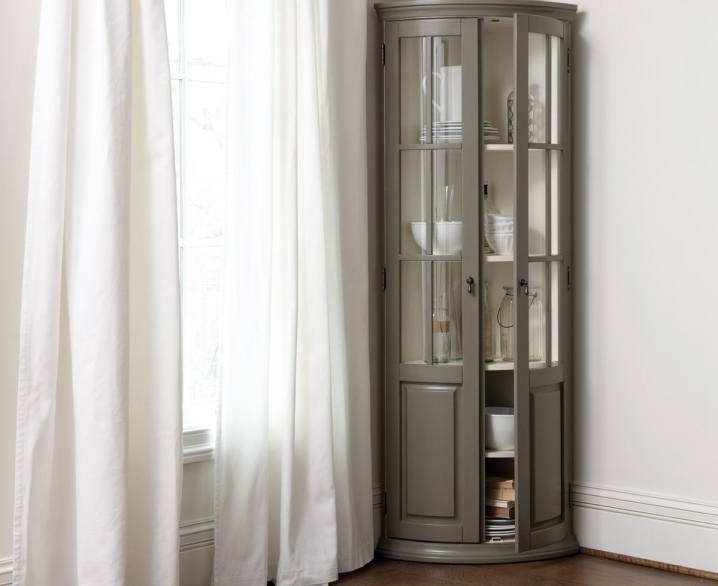
- Loft. A bulky wooden cabinet with the effect of artificial aging of the surface will look good.
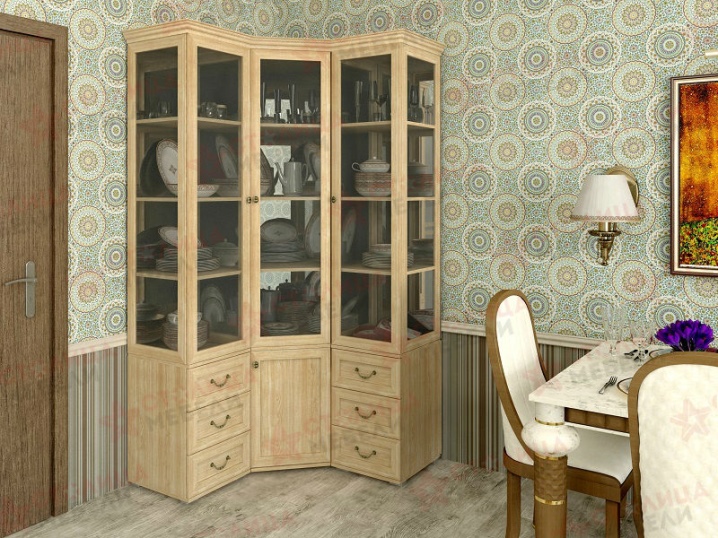
You should not include the buffet in the interior of the following stylistic directions:
- high tech;
- futurism;
- techno.

Filling
Despite the fact that the decorative value of the buffet is very significant, it is necessary to take care of the functional content. As sections for storage can be used: lattices, shelves, drawers of pull-out type, closed sections. You can store in buffets not only cutlery and dishes, but also textiles, many useful little things. You can organize the filling of the buffet in different ways, for example, equip it with the following details:
- railing systems made of hooks and tubes - if dishes are stored in hidden sections, they are ideal;
- dryer - if the sideboard is located in the kitchen, this detail will definitely come in handy;
- trays and grates made of metal and plastic, which are hidden at the bottom and allow you to distribute cutlery, dishes;
- rubberized pads that will not allow the dishes to slide;
- drawers for storing textiles.
The upper display case is equipped with stands for decorative items on open or closed shelves.

Where to put it?
A corner cupboard is most often placed in the kitchen and dining room that is not too large. In addition to these rooms, the corner sideboard will organically fit into the interior of the living room, a small office.
In the kitchen, in the dining room
Serves as an additional section for storing and displaying dishes.

In the living room
It is important to correctly equip the open area, since in the living room the sideboard plays a more decorative, aesthetic role.
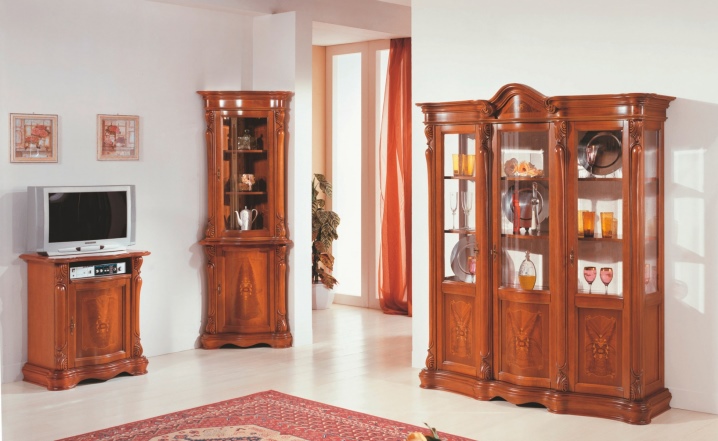
In the office
Can be used as a bar with appropriate drinks, glasses of different types.
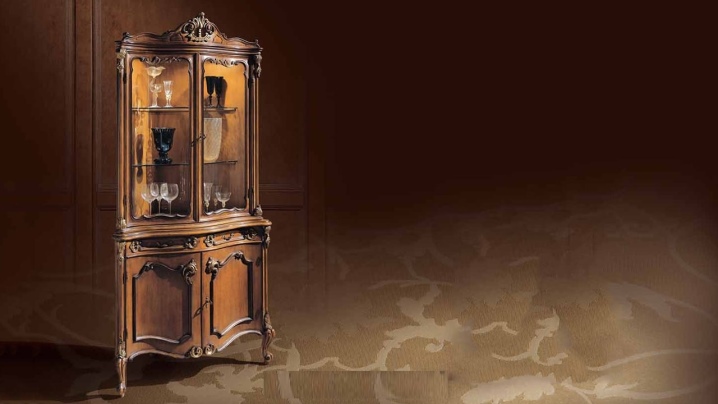
It is imperative to consider the layout of the room. Bulky models require more space, and lightweight small structures will fit in any free corner. The sideboard should not be placed in front of the windows, this will reduce the amount of natural light. But the location opposite the door of the sideboard with mirrored walls will increase the space.
Beautiful examples in the interior
The compact white sideboard will perfectly fit into the laconic, calm interior of the living room, dining room.
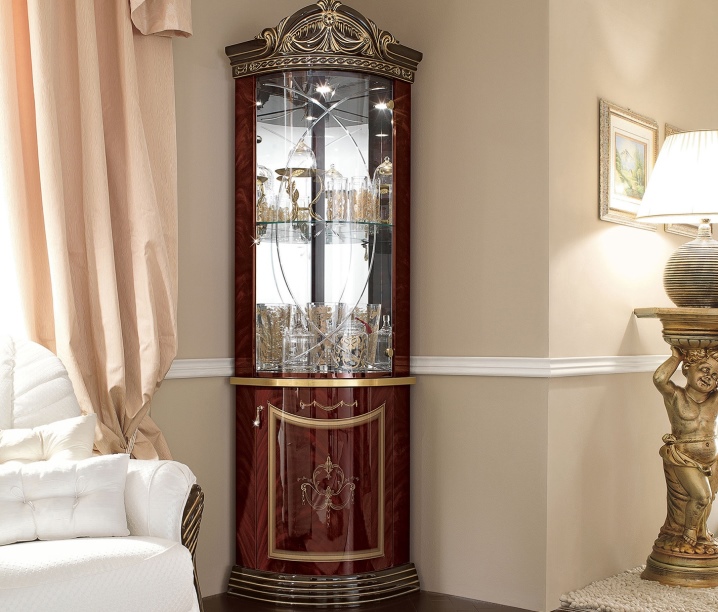
The antique sideboard will perfectly complement any vintage design.
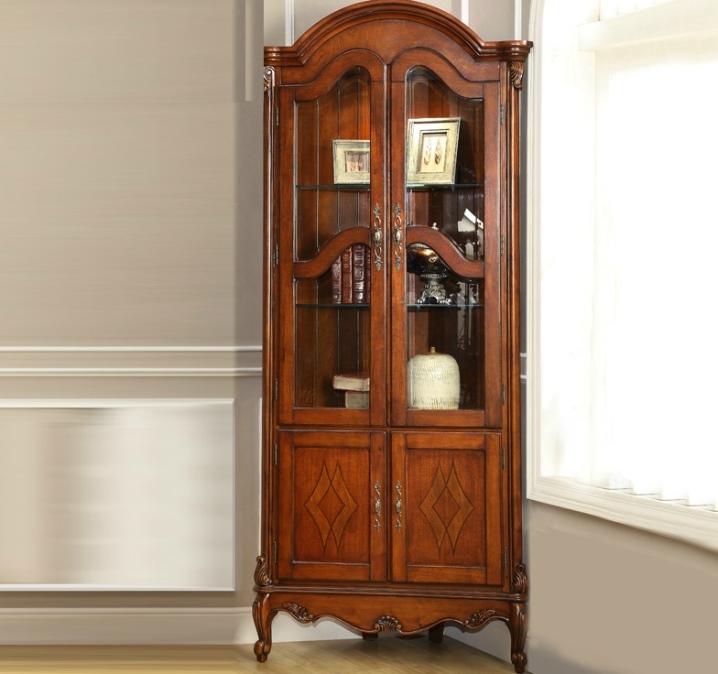
In the living room in such furniture you can store not only dishes and souvenirs, but also books.
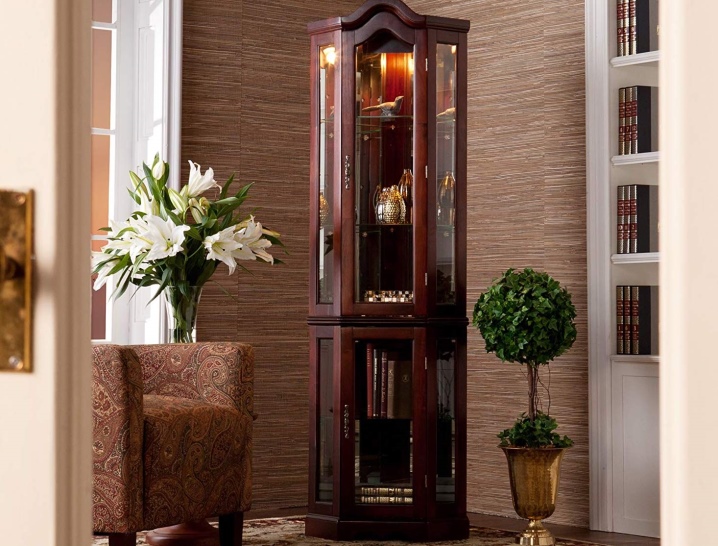
Luxurious interiors require furniture of the appropriate level and design.

In rustic interiors, this piece of furniture is appropriate in a simple, rude design.
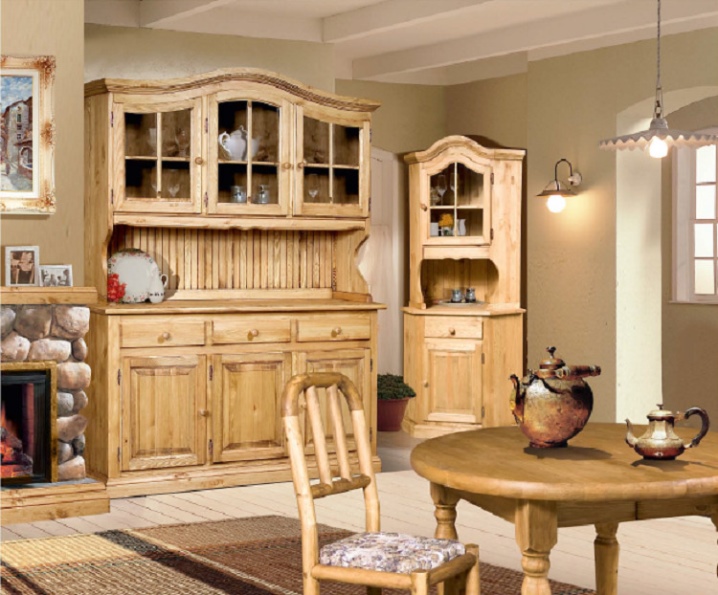
An overview of the corner buffet in the video below.












The comment was sent successfully.